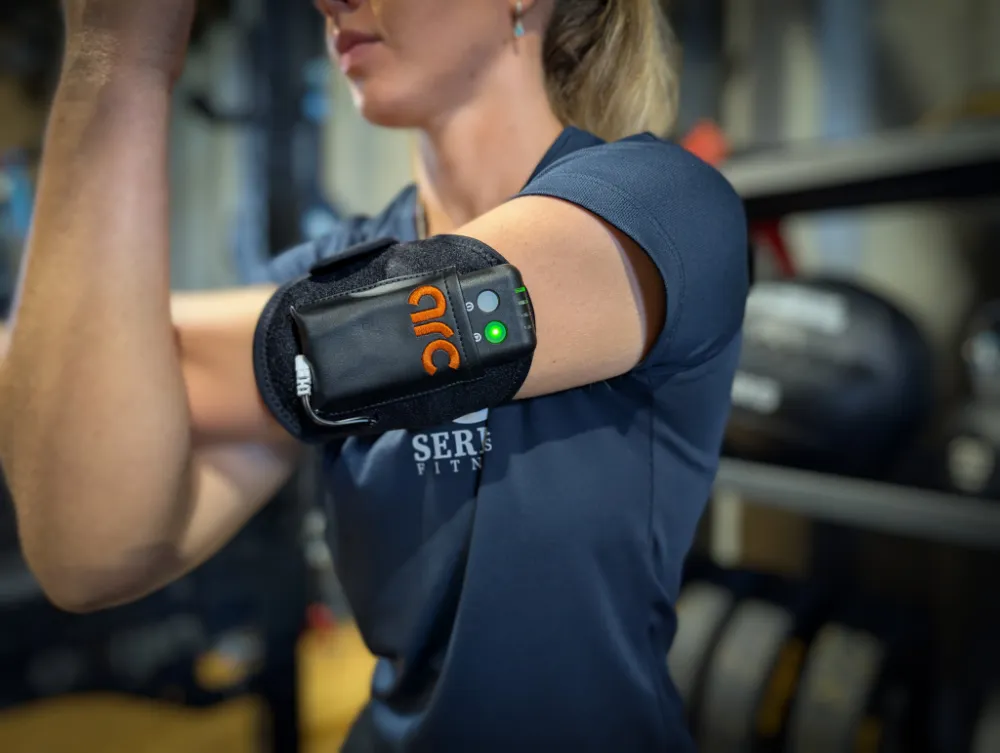The science
ARC Microtech is dedicated to advancing the field of microcurrent therapy through rigorous research and scientific transparency. Collaborating with esteemed institutions like the University of Greenwich, we have published multiple studies in reputable journals such as the European Journal of Applied Physiology and the European Journal of Sport Science.
These efforts underscore our commitment to understanding and validating the clinical applications of microcurrent therapy. This dedication to scientific integrity and transparency reflects our mission to offer effective, evidence-based solutions for pain management and tissue repair, benefiting countless individuals worldwide.
What Is Microcurrent Therapy And How Does It Work?
Microcurrent therapy, a subset of bioelectric medicine, involves the application of extremely low-level electrical currents, typically in the range of microamperes (less than 1 mA), into the body for therapeutic purposes. These currents mimic the body’s natural electrical activity and promote various physiological processes.

Mechanism of Action
Microcurrent therapy (MCT) operates at the cellular level with sub-sensory application, distinguishing it from other electrical stimulation techniques like transcutaneous electrical nerve stimulation (TENS), electrical muscle stimulation (EMS), and functional electrical stimulation (FES), which primarily target muscles or nerves. The low-level electrical currents used in MCT aim to influence cellular activity, promoting cell repair and regeneration.
This is achieved through several mechanisms:
Enhancement of Cellular Energy:
MCT is believed to enhance cellular energy by increasing ATP production, which is crucial for cellular energy and various metabolic processes. Increased ATP levels can promote cellular repair, regeneration, and overall cellular function.
Stimulation of Healing Processes:
By mimicking the body’s natural electrical signals, MCT can stimulate the healing process at a cellular level. This includes promoting cell proliferation, differentiation, and migration.
Modulation of Cellular Signalling Pathways:
MCT can influence various intracellular signalling pathways, such as PI3K, cAMP, PTEN, ERK1/2, and calcium signalling. These pathways are involved in regulating cellular regeneration, tissue repair, and physiological responses.
Regulation of Ion Channels:
MCT can modulate the activity of ion channels, particularly voltage-gated calcium channels, which play a role in cellular excitability and neurotransmitter release.
Iontroporesis:
MCT can enhance the movement of charged or uncharged biomolecules across biological membranes through electrophoresis and electroosmosis, a process known as iontophoresis. This technique is widely used in transdermal drug delivery.
Therapeutic Applications
MCT has shown potential in various therapeutic applications, including:
Short-Term Effects:
- Pain Management: MCT can provide immediate pain relief by modulating pain signals and reducing inflammation.
- Enhanced Cellular Activity: Short-term application of MCT can enhance cellular activity, including ATP production, which supports cellular repair and regeneration.
- Wound Healing: MCT can accelerate wound healing by promoting fibroblast activity and collagen synthesis. The therapy can accelerate wound healing by enhancing cellular repair and regeneration processes.
- Reduction in Inflammation: MCT can quickly reduce inflammation by modulating inflammatory pathways, such as the NF-κB pathway and modulating the activity of enzymes like AMP-activated protein kinase (AMPK) and regulating ion channels.
Long-Term Effects:
- Tissue Repair and Regeneration: Long-term use of MCT can lead to significant tissue repair and regeneration, addressing underlying issues related to tissue damage and cellular dysfunction.
- Improved Cellular Function: Sustained MCT application can improve overall cellular function, enhancing processes like protein synthesis and cellular metabolism.
- Chronic Condition Management: MCT can be beneficial for managing chronic conditions such as non-alcoholic fatty liver disease (NAFLD) by promoting lipid metabolism and reducing fat accumulation in the liver. The therapy can influence adipogenesis and lipid metabolism, making it a potential treatment for obesity and related metabolic disorders.
- Hair Growth: Long-term MCT application has shown potential in promoting hair growth by activating pathways like PI3K/AKT/mTOR and Wnt/β-catenin. Studies have shown that MCT can stimulate hair follicle cells, promoting hair growth.
- Cosmetic Treatments: MCT is used in cosmetic treatments to enhance skin health and appearance.
Conclusion
Microcurrent therapy represents a promising avenue in bioelectric medicine, leveraging low-level electrical currents to modulate cellular functions and promote healing. Its unique ability to operate at the cellular level sets it apart from other electrical stimulation techniques, offering a comprehensive approach to addressing various physiological and pathological conditions. Further research is needed to fully understand the mechanisms and optimize the therapeutic applications of MCT.
Summaries & Abstracts
The Benefits Of The Arc4Health In The Management Of Long-COVID
Unpublished Pilot Study (2023)
ARC Microtech Ltd
Read summary
Physiological Effects Of Microcurrent And Its Application For Maximising Acute Responses And Chronic Adaptations To Exercise
Read abstract
Effects Of Adding Post-Workout Microcurrent In Male Cross-Country Athletes
Published in the European Journal of Sport Science (February 2021)
Read abstract
Effectiveness Of Combining Microcurrent With Resistance Training In Trained Males
Published in the European Journal of Applied Physiology (October 2019)
Read abstract